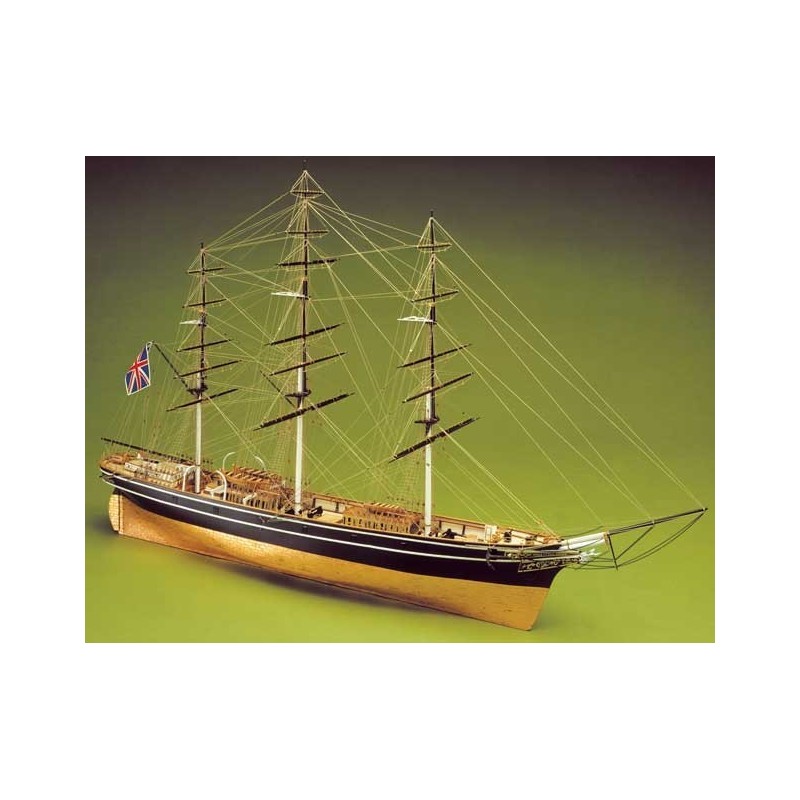



Cutty Sark tea clipper 1:78 Scale
Manufacturer Mantua Model code 789
Cutty Sark
Tea clipper 1869
She was designed by Hercules Linton and built in 1869 at Dumbarton in Scotland, by the firm of Scott and Linton, for Captain John Jock White Hat Willis, and launched November 23 of that year.
The Cutty Sark was destined for the China tea trade, at that time an intensely competitive race across the globe from China to London, with immense profits to the ship to arrive with the first tea of the year.
However, she did not distinguish herself in this trade; in the most famous race, against Thermopylae in 1872, both ships left Shanghai together on June 18, but two weeks later Cutty Sark lost her rudder after passing through the Sunda Strait, and arrived in London on October 18, a week after Thermopylae, for a total passage of 122 days.
Her legendary reputation is supported by the fact that her captain chose to continue this race with an improvised rudder instead of putting into port for a replacement, yet was only beaten by one week.
In the end, clippers lost out to steamships, which could pass through the recently opened Suez Canal and deliver goods more reliably, if not quite so quickly, which as it turned out was better for business.
The Cutty Sark was then used in the Australian wool trade.
Under the command of the respected Captain Richard Woodget, she did very well, posting Australia to England times of as little as 67 days.
Her best run, 360 nautical miles in 24 hours, was said to have been the fastest of any ship of her size.
In 1895 Willis sold her to the Portuguese firm of Ferreira and she was renamed after the firm.
In 1916 she was dismasted off the Cape of Good Hope, sold, re rigged in Cape Town as a barquentine, and renamed the Maria do Amparo.
In 1922 she was bought by Captain Wilfred Dowman, who restored her to her original appearance and used her as a stationary training ship.
In 1954 she was dry docked at Greenwich.
The Sergal Kit of the Cutty Sark Features a double plank on frame hull construction, building plans with general details, English instructions, lost wax brass castings walnut and lime planking, wooden masts and spars, brass and walnut fittings, etched brass details, rigging cord, copper plates for the hull, and silk flag.
All sheet ply sections are laser cut for accuracy.
Scale 1:78 Length: 1150 mm Width: 165 mm Height: 660 mm